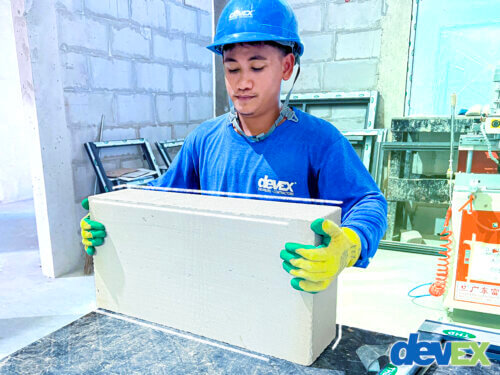
Innovation is the key to building smarter, faster, and sustainability. Concrete hollow blocks are commonly used in construction. However, advancements in construction are continuously developing, bringing new materials such as Autoclaved Aerated Concrete (AAC) blocks.
AAC blocks are made from a mix of sand, cement, lime, calcined gypsum, and aluminum powder. The mixture is poured into molds and cured in an autoclave, producing durable construction material. An autoclave is a machine that uses steam under pressure to kill harmful microorganisms on items placed inside it.
The ingredients of AAC blocks include:
• Sand: Provides structural integrity and acts as a filler material.
• Cement: Binds the ingredients together to form a solid block.
• Lime: Enhances the workability of the mixture and helps in the curing process.
• Aluminum: Powder generates gas during the autoclaving process, resulting in the formation of air bubbles that give the blocks their lightweight and insulating properties.
AAC blocks are commonly used in various construction projects, including residential buildings, commercial structures, industrial facilities, and institutional buildings. They are ideal for walls, floors, and roofs, providing thermal insulation, fire resistance, and soundproofing benefits.
The advantages of AAC blocks include:
• Thermal insulation and energy conservation
• Soundproof
• High fire resistance
• Easy and faster workability
• Eco-friendly manufacturing process
• Cost savings on energy consumption and maintenance
• Moisture-proof
However, some disadvantages of AAC blocks include their higher initial cost compared to traditional building materials and the need for specialized equipment and training for installation.
AAC blocks are considered eco-friendly due to their low energy consumption during manufacturing and their ability to reduce energy usage in buildings. The lightweight nature of AAC blocks also reduces the load on the foundation and structure, resulting in cost-efficient construction projects.
Compared to normal hollow blocks, AAC blocks are lighter, have better thermal insulation properties, and offer higher compressive strength. AAC blocks also have a lower density compared to normal hollow blocks, making them easier to handle and transport during construction.
Written By: Christian Kimp Atip


Comments are closed here.